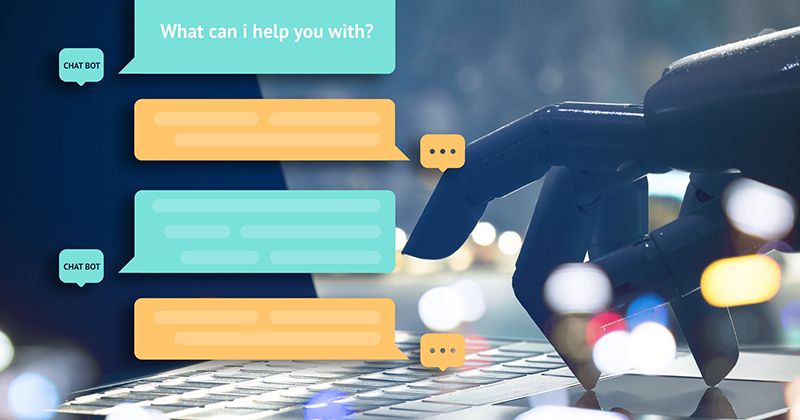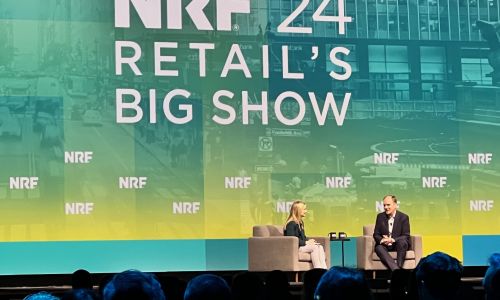One of the key themes at this year’s Mobile World Congress was how to apply AI to telecom operations, employee tasks, and customer experience. The focus illustrates that machine learning and automation are critical applications for an industry striving to keep up with innovation.
In particular, telcobots—bots used within the telecom space—are increasingly being implemented across mobile and communications firms. While over-the-top (OTT) providers like Facebook Messenger, Kik, and virtual assistants Siri, Alexa, and Google have largely adopted chatbots into their systems, telecoms are just getting into the game. They will have to prove their worth in a high-stakes industry and see just how well they can cooperate with a world teeming with innovation.
Cautiously late to the party
With so many industries jumping in on the chatbot craze, why are telcos so late to the party? RBI Research analyst Sarju Vasavada cites the industry’s cautious nature to approaching innovative technology, as well as regulations they must adhere to, unlike Facebook or Twitter.
“They cannot really afford to introduce any new thing in the network that fails,” Vasavada says. “They don’t have that option or flexibility. So they’ve been sitting on the sidelines, watching how the new technology pans out in other domains.”
He adds that telecom companies, with profits ranging in the billions, may not want to take such a substantial risk ethically and financially. “They want to make sure that the chatbots are failsafe.”

T 2018 Mobile World Congress in Barcelona. Photo by Ian Hughes
But the risk could be worth the reward. Telcos could save around $1.2 billion on customer care management by 2022, according to RBI Research, by automating or assisting with basic account inquiries, SIM card purchases, and troubleshooting.
Dimitris Mavrakis, a research director at ABI Research, says he believes telcobots have a unique advantage because of the depth of consumer data telecoms collect and can act on. “In fact, telcos can be proactive or predictive for every end user,” he says. Getting to a predictive level of automation is complex, he stresses, but “may be something telcos focus on in the future for service personalization.”
Right now it’s still mostly theory. In a 2017 survey conducted by TM Forum, only 18 percent of telecoms have integrated some form of AI into their business. Another 29 percent are taking a wait-and-see approach, with AI on the drawing board for future use.
Vasavada emphasizes that chatbots could create a more customer-centric, holistic experience. “Telcobots will play a central role in establishing relationships between telcos and the customers from the customer standpoint,” he says. “It will be the dynamic interaction trying to understand them, what their usage patterns are, and then using that data analytics platform to understand what the customer needs are.”
Though the industry at large is taking a cautious approach, those who have taken the risk are seeing success. Executives from AT&T and Vodafone share their experiences with customer-related telcobots.
AT&T
In his 20-year career with U.S.-based AT&T, Director of Robotics Dhru Shah has seen bots transform into efficient partners that deliver fast services, leverage data and analytics, and orchestrate workflow.
Now armed with around 1,000 bots and some 2,000 bot developers, Shah focuses on incorporating machine learning and cognitive skills to enhance telcobots’ abilities to help customers and employees.
According to Shah, AT&T’s telcobots incorporate natural language processing to answer simple customer inquiries such as billing questions or technical issues with phones such as replacing batteries. They are deployed through several interfaces: website, custom app, APIs, and the workflow engines in its, business support systems.
“The virtual assistant is able to provide answers, provide links to related material, and hand off to a live associate if the chatbot is unable to resolve the problem,” says Shah. “This has helped to reduce live support contacts, transfers, and average hold time for customers.”
In addition, he pointed out that telcobots can be an essential internal tool to assist AT&T employees. For example, its vacation scheduling chatbot allows employees to request time-offs, which then communicates with internal human resources and scheduling systems. This replaces a time-consuming, manual process.
“It also coordinates with our internal instant messaging system and email Outlook so out-of-office notices are automatically set and updated,” he says. “This integrated coordination saves time and eliminates forgetting to do all the individual steps previously required.”
He explains that conversations taking place between telcobots and people can be located on an automation platform, which uses machine learning to understand and get smarter for future interactions.
“Advances in data analytics and automation are really going to enable us to solve complex internal business challenges,” says Shah. “Chatbots are really going to be integral to how we transform our products processing services, as well as our people internal data sharing and collaboration through microservice and security.”
AT&T has also recognized more creative uses of chatbots. During the 2016 holiday season, its Atticus entertainment bot conversed with social media users about their favorite shows. In real-time it quizzed people on pop-culture, fun facts, and trivia about trendy television and movies. While it was never intended for long-term use, Atticus gave AT&T valuable insight about customer adoption of bots.
“We were able to gauge and learn customer behavior,” says Shah. “More than half of the users returned to re-engage with the bot for a second time. So it really piqued our interest in shaping how potential future use cases will be with customer bots.”
Vodafone
Vodafone, one of the world’s largest telecom providers, introduced a conversational chatbot named TOBi in July 2017, with the help of IBM Watson. TOBi is designed to interact with users available through webchat on the Vodafone website and the My Vodafone App. TOBi currently assists customers with basic account inquiries and troubleshooting, as well as the purchase of SIM-only mobile phone plans.
According to Vodafone, the chatbot’s knowledgebase can field about 70 percent of customer queries, both simple and complex. It transfers users to an associate if it can’t solve the issue. This is a critical step, as Vodafone cited research saying that 55 percent of U.K. consumers think the most important factor in the ideal customer experience is getting a prompt and effective response to queries.
According to research by IBM, telcobots can give associates more time by handling smaller inquiries and cut costs by boosting response times, leading to around 80 percent of questions solved overall. In a perfect world, chatbots can handle large volumes of queries with low impact, while associates can focus on more complex interactions or those with higher impact.
Jon Davies, head of digital at Vodafone, says he wants TOBi to be a virtual arm around customers’ shoulders, giving them the independence achieved by working with a virtual assistant who guides them along the way.
“Everybody experiences at some point friction in their customer journey and they need support,” he says. “What we are seeing is a lot of our customers want to be able to self-serve as much as they can. TOBi provides them with a very neat and elegant addition to that, where they can interrogate him with multiple questions and he will support them through their journey, so they still have a sense of control and empowerment.”
Davies adds that consumers are welcoming of TOBi. “Interestingly when they know they are interacting with a chatbot, there’s some curiosity,” he says. “They work harder to improve their spelling and grammar. Maybe it’s because they want to make sure TOBi understands, and also, they tend to be very polite to him, as well. They treat him extremely well.”
He says the goal is for TOBi to become an asset for Vodafone’s contact center sales and services. So far TOBi has drastically improved the sales purchase journey for SIM only products, with transactions taking 50 percent less time compared to a self-guided session, he says.
Put customers first
These examples show promise of how bots can enhance telco operations and experiences. For telcobots to succeed over the long term, however, they must prioritize the customer perspective. It’s not enough just to build a bot.
According to the 2016 Aspect Consumer Experience Index, 44 percent of consumers prefer using a chatbot, if the bot performs to expectations. This can mean that its natural language understanding must be able to handle casual speech well enough and recover smoothly from questions it doesn’t understand, redirecting to a live associate, or giving other suggestions. In addition, the report said that two-thirds of consumers are happier if they can solve an issue without a live person. Telcobots that can be used on several platforms, such as mobile devices or home assistant devices, can be a great opportunity for telcos to approach consumers on the channels they prefer.
Regardless of the industry’s trepidation, telcobots aren’t going anywhere, and customers want them. “I think digitization of telcos is imminent,” says Vasavada. “Telcos can no longer afford to neglect the interesting part of the business: customers.”






